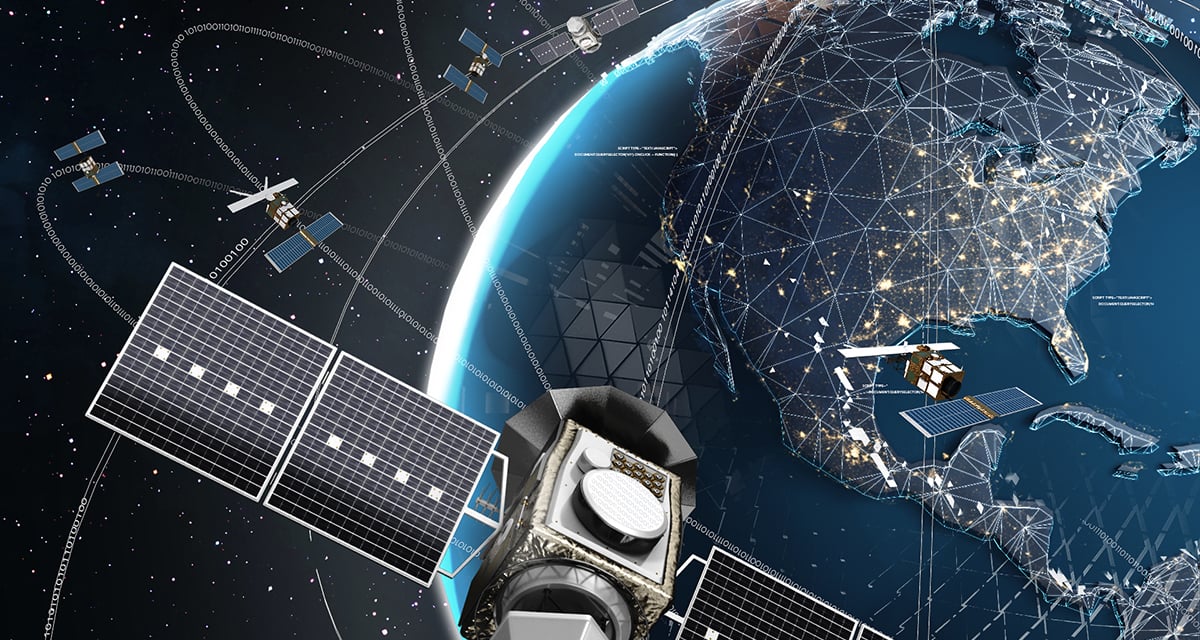
Photo: Courtesy of Raytheon Technologies
The thousands of satellites orbiting Earth are hard at work. They help people communicate and navigate from point A to point B. They help spot wildfires, predict the weather and support defense networks. But their effectiveness has a limit: the speed at which people on the ground can access and interpret the data they produce.
Almost every one of the satellites on orbit today has a unique ground control station to collect and process its data. And, with 1,100 satellites set to launch annually by 2025, according to MIT Technology Review, the cost and technical challenge for operators across governments and industry could be overwhelming. This is particularly relevant for defense organizations worldwide that are rapidly developing and deploying small satellites and constellations for persistent and resilient networks.
At Raytheon Intelligence & Space, a Raytheon Technologies business, we are helping civil and military satellites get the most value possible from their orbiting assets through a command-and-control system that works on any platform, with any sensor from any vendor and on any orbit.
Through a single ground system, we can increase the speed and fidelity of data collection. Satellites aren’t communicating only with the ground system; they’re communicating with each other. And, through modern software developments, we’re able to do it faster than ever.
Right now, we’re supporting programs to deliver updates in short, two-week increments. Systems get twice-a-month updates, prioritized and delivered through the software development method known as DevSecOps. That way, customers no longer have to wait six months or a year for a fix – glitches get patched and concerns are resolved quickly and continuously.
Our rapid-delivery model can handle volume and complexity because of an open and flexible software base. It allows the ground control system software to be scalable, whether it’s one satellite in need of an update or a thousand.
As customers receive faster updates to their operating systems, they can also take advantage of artificial intelligence and machine learning. For example, low Earth orbit satellites move at 15,000 mph. That doesn’t leave time for human eyes to note changes in an environment or detect something out of the ordinary.
But, with AI/ML tools in the mission management software, sensors act as “superhuman eyes.” They can pick up errant signals in a split second, and the system can log and flag the signals for review. The system may not know what the signal is, but it will know it shouldn’t be there, or that it’s new.
The next frontier is greater integration of assets. That will help continuity – if an object of interest passes out of one sensor’s range, another sensor, like one on an aircraft, can swoop in and take over.
Satellites or sensors in use by one service can be harnessed by another to transfer information faster and to save operational costs. Operators can have access to better tactical resources through mission management technology.
Operationally, these integrated satellite communications can be just as critical to a mission as an F-35 is now. If there’s an intelligence need, any sensor in the specific area of need can be tasked to provide information, and since the system is integrated, the data goes directly to the right user on the ground.
Raytheon Technologies develops space technologies that are used for purposes as diverse as missile warning and defense, intelligence, weather and climate monitoring, Earth observation, human space flight, and beyond. What we do in and for space is essential for global commerce, scientific discovery and national security. Learn more.





















